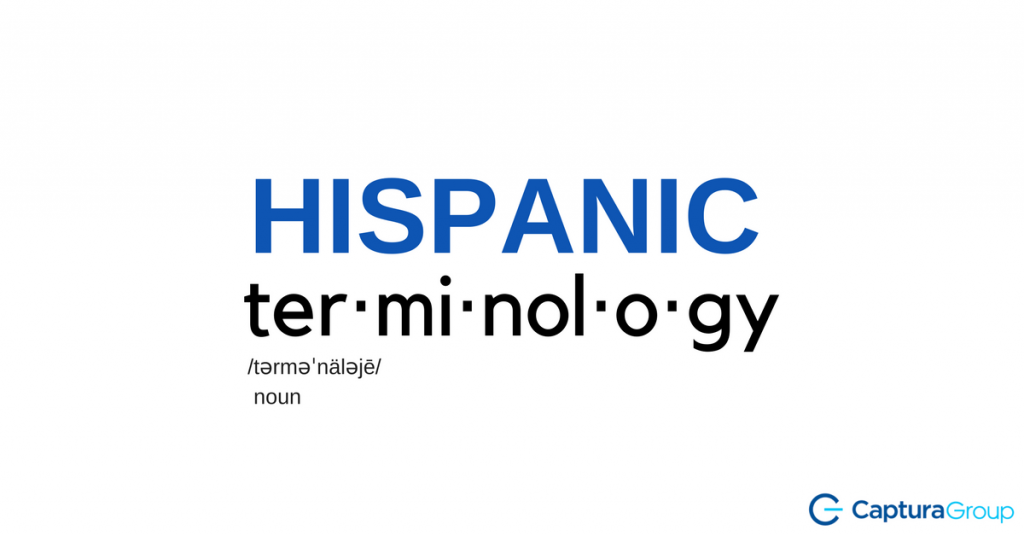Hispanic Heritage Month is around the corner and with it comes an influx of brands trying to connect to the ever-growing, digitally-savvy, and purchasing powerhouse: the Hispanic community. It’s always refreshing to see brands celebrating Hispanics. Some brands are well prepared and hit the target, others get kudos for trying to craft messages that resonate, with the occasional ad that completely misses the mark. But what should marketers do to ensure that their brands get it right?
We’ve covered this before: reaching Hispanics is much more than just adding a Hispanic layer over general market executions. There are a lot of insights to draw inspiration from to connect with U.S. Hispanics, but there are also general best practices. A major key that can easily get lost in translation is Spanish terminology. One single word can completely shift your communications to an entirely different target. For example, a bombilla could mean a straw or a light bulb depending on which Spanish speaking country the reader originates from. Let’s take a dive into why Spanish terminology is crucial for an impactful U.S. Hispanic message, and to understand what to watch out for or possibly avoid, and what to confidently take on.
Spanish IS a big deal
Yes, we are addressing U.S. Hispanics, yes many have acculturated, yet the Spanish language online opportunity exists for all brands to their advantage. A Google study revealed that two-thirds of U.S. Hispanics have used Spanish to search and the fastest growing Spanish language search categories include retail, telecom, health, skincare, food, auto, and beauty. E-commerce gigante Amazon recently confirmed this by rolling out a U.S. Spanish version of their retail platform.
However, the size of the opportunity for brands will depend on how well they connect with the audience and dare we say it: not alienate them entirely. How can a brand team connect with a U.S. Hispanic audience? There are so many Hispanic countries represented on the map, how do you know who you’re speaking to?
What to watch out for
When creating an impactful message you must take a deeper look into your audience. Aside from language preference, and age group, where is your audience from? Mexico? Argentina? Puerto Rico? Make sure you’re using terms your target audience understands or that encompass all Spanish speaking countries and look out for the following:
- Words with multiple meanings: the Spanish language is complex in that the exact same word can have an entirely different meaning. Like torta. In much of Latin America, it’s a cake. In Mexico, it’s a savory sandwich made with a specific type of bread. A Mexican mollete – a special bread topped with beans and melted cheese, is very different from a mollete in Guatemala – a sweet Easter bread. Opportunity: establish brand credibility by showing that you know how your audience speaks, like we saw in this 2015 Ford campaign.
- Formality: there is also a built in formality to the Spanish language that is used in daily life. Tú vs Usted. Both words mean ‘you’. This means that in Spanish brands have broader options to choose from when establishing brand voice and tone. Usually, tú is used as an informal voice and usted is used when the brand needs to be more formal in their communications. Much of this will depend on the age group you’re targeting. An older audience is usually addressed in usted and a younger audience in tú. Whichever you choose, stay consistent to avoid confusing your U.S. Hispanic audience.
- Unintentional bad words: this is a sticky subject but one that can never be ignored. There are several words in the Spanish language that in some countries are colloquial, everyday words, while in other Southern American countries they’re considered downright offensive. Always look out for these words because an otherwise seemingly innocent post about Mexican sweet bread can alienate many Spanish speakers from other countries.
How to hit the mark
Old habits are hard to kill, right? But you just have to make the habit out of asking the question: Is this the right term? Include it as a part of your musts before even starting to produce content, along with SEO, and voice and tone.
- Use online dictionaries: Go the extra step and search for the word, term, or phrase online. Find out if the word you’re using means the same in all Spanish speaking countries. Image searches and video results will also help gauge if it’s the right word to use. Who knows? You might have found a golden nugget of a term. The Spanish language is rich, many words are difficult to translate but have a deep meaning that connects across all Latin-American cultures.
- Diversify talent: Make sure you hire an experienced and diverse creative team made up of different backgrounds and include them in your brainstorming sessions. A designer from Colombia can provide insight to the copywriter from Mexico. Design and copy can come together to provide a solution that communicates the most effective message.
- Target the right audience: In the end, if there is a tricky word or term that you must use and you’ve concluded that some Spanish speakers may not comprehend it, just make the best selection depending on your target audience. For example, if the majority of your target audience is from Mexico then use the term that people from that country will identify with.
For more Hispanic Heritage do’s and don’ts check out the Captura Group company blog.
